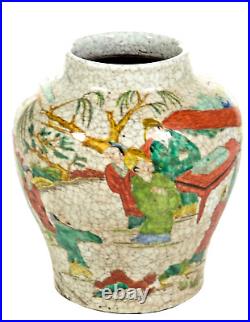
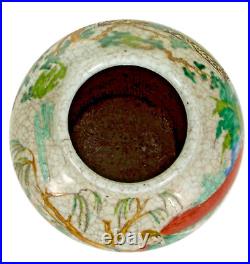
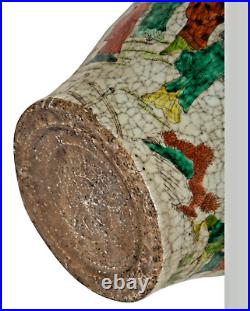
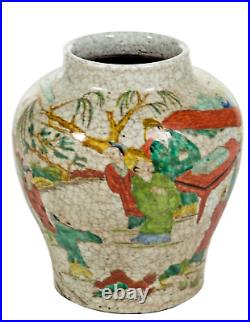
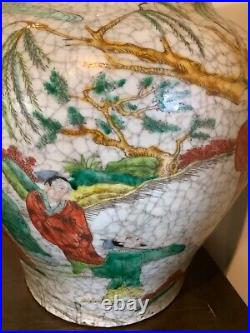
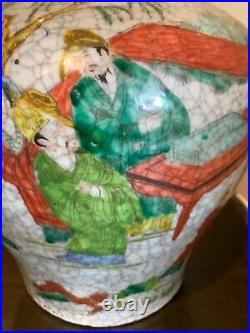
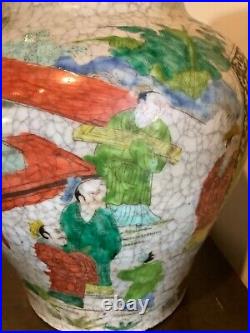
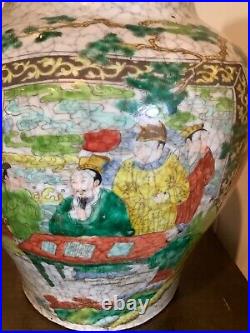
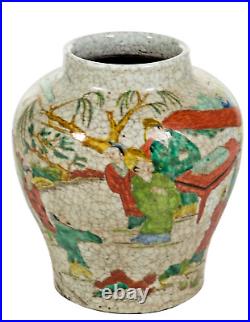
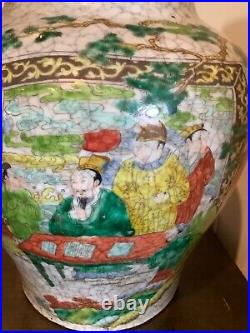
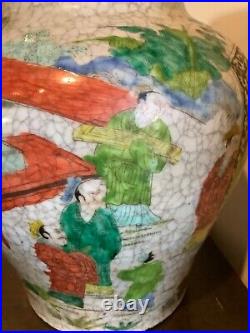
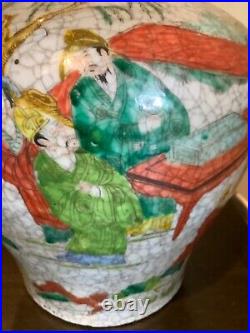
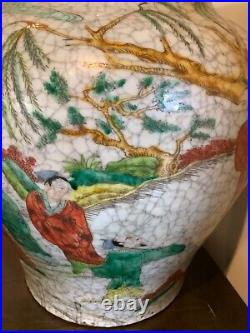
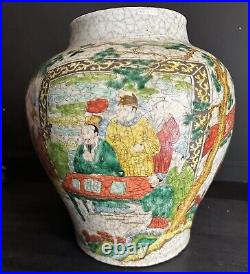
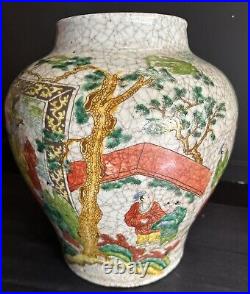
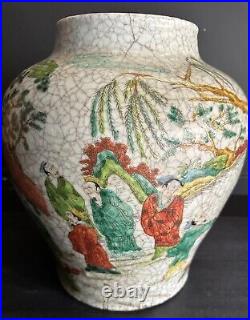
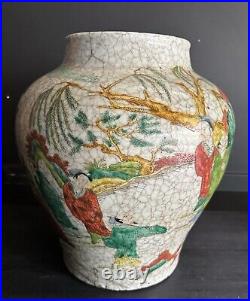
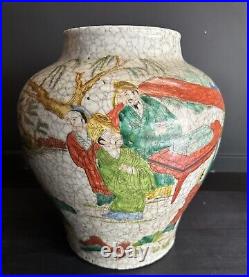
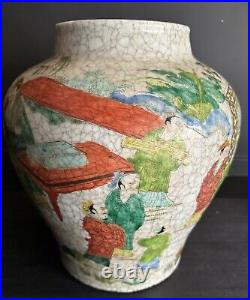
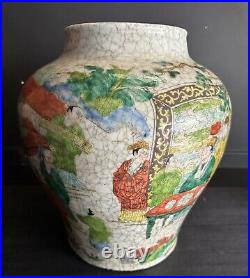
Check out nandaimo’s other items! A beautiful antique ceramic vase with an all-over crackle glaze, and wonderful hand painted scenes of scholars on the crackle base, wise men under a weeping willow tree. Colors include jewel tones in White, red, yellows and greens. Use this large heavy vase on a mantle, dining table or entry way to hold a single or several tall seasonal blossoming branch in Spring, hence the narrow neck (to support the branch) and the wide belly (to allow the branch to gracefully lie to one side). 13.75 H x 12.75 W inch. In the wonderfully rich and varied history of Chinese ceramics. Porcelain is considered by many to be amongst its most exquisite. Was so named by French art historian Albert Jacquemart whose classification of ceramics in the 1860s according to the colour of the enamel used remains in use to this day and includes. Unusually for most types of wares. Chinese porcelain typically known in China as. Or’five colours’ can be dated very accurately to Kangxi, the fourth Emperor of the Qing dynasty. Whose reign of 61 years between 1661 and 1722 makes him the longest reigning emperor in Chinese history. More specifically, the zenith of. Production was during a four-decade period between 1685 and 1725 with the majority of pieces including the famed. Being made at the imperial kilns in Jingdezhen, China’s’porcelain city. Made with a highly refined paste resulting in an exceptionally fine grade of ceramic ware. Chinese porcelain is identifiable by it’s vivid green enamels and polychromatic overglaze colours including stunning yellow, red, blue and black and much less common but equally as beautiful, gold. It’s largely due to the nature of the glaze that. Porcelain is renowned for its unique iridescence and translucence, perhaps why it was so highly prized and desirable by late-seventeenth and early-eighteenth century European consumers and remains so today.
 Posted in
Posted in 

